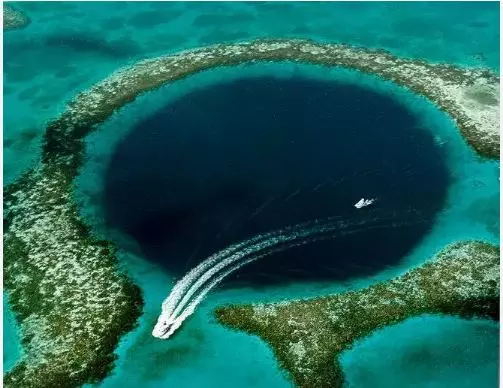
Second deepest: 'Taam ja' blue hole is a snapshot of life thousands of years ago
text_fieldsOff the coast of the Yucatan Peninsula in Mexico, a team of scientists has made a stunning discovery of the deepest blue hole which is named ‘Taam ja’ and is the second deepest known blue hole in the world, after the Dragon Hole in the South China Sea.
Taam ja' - which means "deep water" in Maya was discovered in 2021 but has been documented in the scientific journal Frontiers In Marine Science, offering an incredible glimpse into the mysteries of the ocean depths.
It is about 900 feet deep and has an area of 147,000 square feet. It is located in Chetumal Bay and was originally discovered in 2021.
Blue holes are home to ancient limestone caves carved into the ocean floor. Due to an accumulation of dead bacteria from fallen trees and leaves, these lesser-known inland blue holes are black in appearance and devoid of light. They appear as nothing more than swamps from the surface, but what lies beneath is incredible.
"They are largely poorly understood," said Christopher G. Smith, a coastal geologist at the U.S. Geological Survey (USGS) who has studied other submarine sinkholes but was not involved in the latest research. Despite the lack of understanding, these gigantic voids are teeming with life that has adapted to the low-oxygen environment.
The indigo crater's walls protect the water from the tides, making it an ideal spot for marine life to thrive. Blue holes may offer a snapshot of what life was like thousands of years ago and could even provide insights into life on other planets.
The scientific community is buzzing with excitement over this latest discovery, and many are eager to explore the depths of Taam ja' further.























